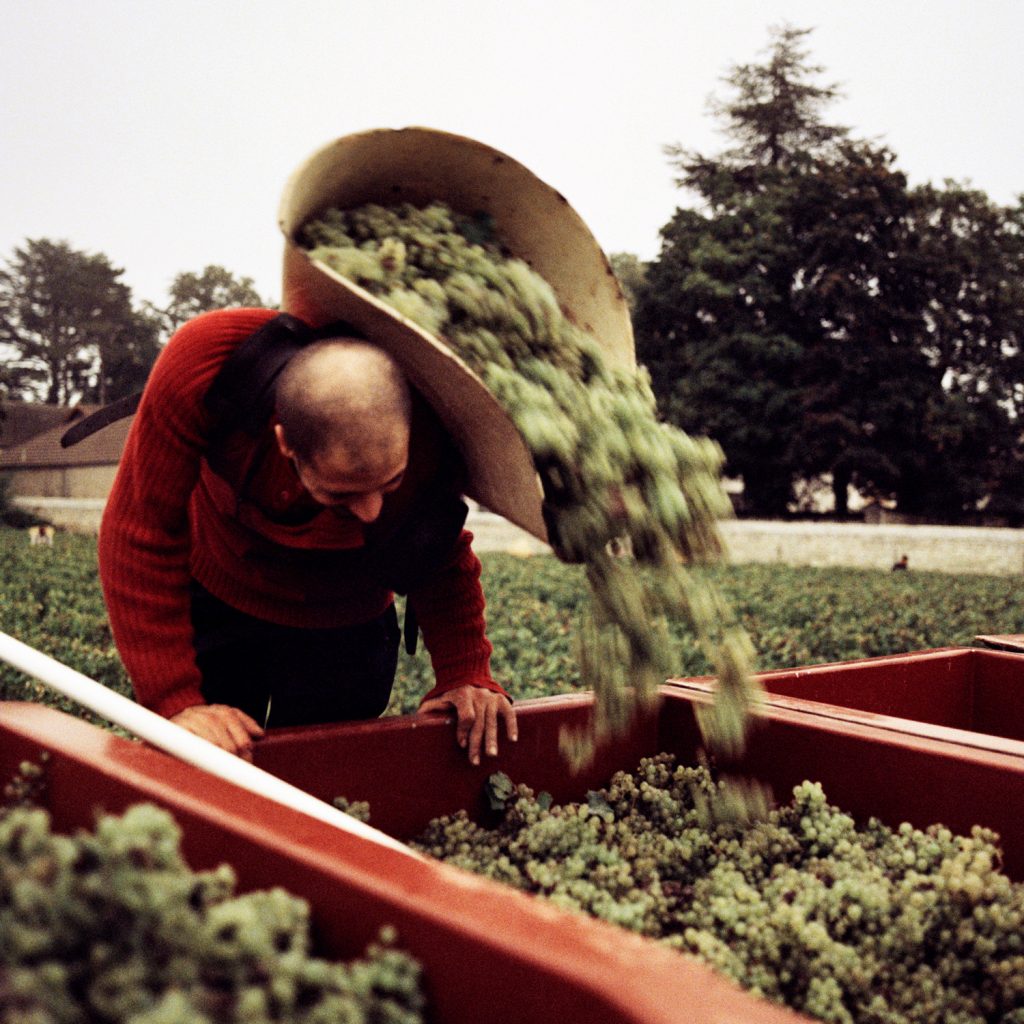Burgundy’s grapes: Chardonnay
Author: Adam Holden

Across the world, Chardonnay may be considered a divisive “Marmite” grape, but in Burgundy, it reigns supreme.
For anyone starting their Burgundy adventure, the region’s sheer complexity can be daunting. Thankfully, there’s at least one aspect which is really quite simple: the grape varieties. All the great wines of Burgundy are produced from either Chardonnay or Pinot Noir.
Burgundy’s white grape: Chardonnay
Chardonnay is adaptable, malleable and responsible for many of the world’s finest white wines. It’s easy to see why it’s so popular with winegrowers and winemakers in almost every wine region on earth.
Yet, Chardonnay is often misunderstood. Perhaps more than any other varietal, it suffers from a bad reputation in certain circles of wine drinkers. Overly oaky, buttery and alcoholic examples – an increasing rarity, it must be said – are enough to turn some people off for life. And that’s fair enough. But often what people dislike is this style of Chardonnay, not Chardonnay itself.
In fact, and particularly when it comes to Burgundy, novice drinkers may not even realise that the sublime wine they’re enjoying – a crisp, steely Chablis for example – is even made from Chardonnay. This isn’t the drinker’s fault. European wine labels historically emphasise the place a wine has come from, rather than its grape variety. With the ingredients left largely oblique, it’s easy to understand why somebody might think that Chardonnay and Chablis are two completely different things.
The key thing to remember is this is a grape with myriad styles.
Vibrant, lively Chablis
When it comes to Chablis, Chardonnay takes on a pure, refreshing and lively style. Here in the northern part of Burgundy, growing conditions allow for a long, slow ripening: this lets the Chardonnay develop complexity while retaining its characteristically fresh acidity. The grape manifests itself with a lot of vibrancy, lively citrus and stony minerality.
Most Chablis producers don’t use any new oak, making this an exceptionally pure expression of fruit. It’ll very likely appeal to even the most hardened Chardonnay sceptics – particularly alongside some simply prepared seafood. High-end examples can age for many years, starting to soften and taking on intriguing nutty and spicy notes.
The Côte de Beaune
For an entirely different style of Chardonnay, look to the Côte de Beaune. Its Chardonnay is nothing short of luxurious, notably when from the most famous villages of Puligny-Montrachet, Chassagne-Montrachet and Meursault. Chardonnay from Puligny has freshness and floral notes, coupled with rich generosity. Chassagne boasts notes of orange and marmalade, with nuanced spiciness, depth and concentration.
In Meursault, the classic description of butter and hazelnuts frequently rings true; it may not have a Grand Cru vineyard to append to its name, but these village wines often stand out among their neighbours. Further south, the Mâconnais has a style of its own, too: Pouilly-Fuissé remains the benchmark, with well-deserved and long-overdue Premiers Crus on the way.
Chardonnay’s versatility
The versatility of Chardonnay – in Burgundy alone – means that there’s something here to suit any palate. There’s endless interest in exploring the different wines produced even on a single hillside.
To visit the region is a revelation: stand in one spot and have Grand Cru, Premier Cru and village-level vineyards all within a few paces, each responsible for wines which differ as much in style as they do in price.


